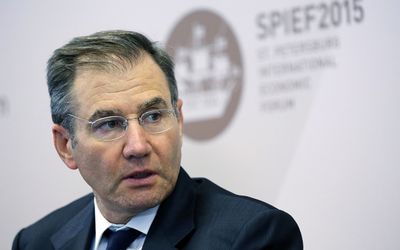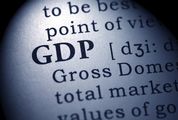MINING and trading group Glencore is not planning new coal mines in SA, but would consider buying mines already in production, says CEO Ivan Glasenberg.
Mark Cutifani, CEO of Anglo American, which together with Glencore and South32 is a major coal exporter and supplier to Eskom, said two weeks ago the group was planning to exit all its coal interests.
"If assets are up for sale in SA, we will look at them. We will have to monitor and see what is for sale," Mr Glasenberg said on Tuesday after the release of full-year results.
He added there could be anti-trust issues if there was too much ownership concentration among suppliers to Eskom.
Mr Glasenberg said the coal market was looking "interesting". There were no major new coal mines under construction. Glencore expected global seaborne supply would decline to about 870-million tonnes this year from 900-million tonnes last year, largely because of decreased imports by China and reduced exports by Indonesia and the US.
Yet demand for coal from India, Korea and Malaysia was rising. About 40-million tonnes of SA’s 75-million tonnes of coal exports this year could be sold to India, but it was already evident that ships arriving at Richards Bay Coal Terminal to collect coal were not filling up as expected.
Glencore recently sold the Optimum coal mine, which was in business rescue as a result of losses on supplying Eskom, to Tegeta Resources, in which the Gupta family and President Jacob Zuma’s son Duduzane have interests.
Glencore chief financial officer Steve Kalmin said the net loss on this transaction was $600m. As far as other commodities were concerned, Mr Glasenberg said he could not predict the timing of a price recovery. But global copper inventories were only 15 days and Glencore’s copper sales into China were firm.
Glencore would continue to cut production that does not make money and worsens already oversupplied markets.
Glencore reported an attributable loss of $4.9bn for the year to December from 2014’s profit of $2.3bn. Anglo American reported recently a loss of $5.6bn for the same period, double 2014’s loss, while BHP Billiton reported a half-year loss of $5.7bn from a previous interim profit of $4.3bn.
Mr Glasenberg said operating profit from Glencore’s industrial interests fell 38%, but profit from marketing dropped a lesser 12%. The group reduced net debt to $25.9bn at the end of December, as it has cut back spending on mines to $5.7bn and working capital to $6.6bn. It has raised $1.1bn from disposals, including precious metals streaming.
Mr Glasenberg said the group was positioning its balance sheet to withstand even lower prices. It expected net debt to fall to between $17bn and $18bn by the end of this year, and to $15bn by the end of next year, from asset sales and improved free cash flow. It would generate $4bn-$5bn from asset sales this year, including a minority stake in its agricultural business.
"The results reflect continued cost-reduction, but nothing dial-moving thus far, and we wait to see how the asset sales progress through the second quarter," Investec’s global mining team said.
"There is also no mention of dividend forecast going forward, which management previously committed to cut to mid-2016."
Asked about the resumption of dividends next year, Mr Kalmin said Glencore would look at its net debt, cash generation, the operating environment and market sentiment, taking feedback from its shareholders. With a healthy balance sheet and free cash flow, some form of dividend would be back on the agenda.

Ivan Glasenberg. Picture: BLOOMBERG
MINING and trading group Glencore is not planning new coal mines in SA, but would consider buying mines already in production, says CEO Ivan Glasenberg.
Mark Cutifani, CEO of Anglo American, which together with Glencore and South32 is a major coal exporter and supplier to Eskom, said two weeks ago the group was planning to exit all its coal interests.
"If assets are up for sale in SA, we will look at them. We will have to monitor and see what is for sale," Mr Glasenberg said on Tuesday after the release of full-year results.
He added there could be anti-trust issues if there was too much ownership concentration among suppliers to Eskom.
Mr Glasenberg said the coal market was looking "interesting". There were no major new coal mines under construction. Glencore expected global seaborne supply would decline to about 870-million tonnes this year from 900-million tonnes last year, largely because of decreased imports by China and reduced exports by Indonesia and the US.
Yet demand for coal from India, Korea and Malaysia was rising. About 40-million tonnes of SA’s 75-million tonnes of coal exports this year could be sold to India, but it was already evident that ships arriving at Richards Bay Coal Terminal to collect coal were not filling up as expected.
Glencore recently sold the Optimum coal mine, which was in business rescue as a result of losses on supplying Eskom, to Tegeta Resources, in which the Gupta family and President Jacob Zuma’s son Duduzane have interests.
Glencore chief financial officer Steve Kalmin said the net loss on this transaction was $600m. As far as other commodities were concerned, Mr Glasenberg said he could not predict the timing of a price recovery. But global copper inventories were only 15 days and Glencore’s copper sales into China were firm.
Glencore would continue to cut production that does not make money and worsens already oversupplied markets.
Glencore reported an attributable loss of $4.9bn for the year to December from 2014’s profit of $2.3bn. Anglo American reported recently a loss of $5.6bn for the same period, double 2014’s loss, while BHP Billiton reported a half-year loss of $5.7bn from a previous interim profit of $4.3bn.
Mr Glasenberg said operating profit from Glencore’s industrial interests fell 38%, but profit from marketing dropped a lesser 12%. The group reduced net debt to $25.9bn at the end of December, as it has cut back spending on mines to $5.7bn and working capital to $6.6bn. It has raised $1.1bn from disposals, including precious metals streaming.
Mr Glasenberg said the group was positioning its balance sheet to withstand even lower prices. It expected net debt to fall to between $17bn and $18bn by the end of this year, and to $15bn by the end of next year, from asset sales and improved free cash flow. It would generate $4bn-$5bn from asset sales this year, including a minority stake in its agricultural business.
"The results reflect continued cost-reduction, but nothing dial-moving thus far, and we wait to see how the asset sales progress through the second quarter," Investec’s global mining team said.
"There is also no mention of dividend forecast going forward, which management previously committed to cut to mid-2016."
Asked about the resumption of dividends next year, Mr Kalmin said Glencore would look at its net debt, cash generation, the operating environment and market sentiment, taking feedback from its shareholders. With a healthy balance sheet and free cash flow, some form of dividend would be back on the agenda.






















Change: 0.80%
Change: 0.61%
Change: -0.25%
Change: 0.13%
Change: 4.02%
Data supplied by Profile Data
Change: 1.13%
Change: 0.37%
Change: 0.80%
Change: 0.00%
Change: 0.33%
Data supplied by Profile Data
Change: 0.58%
Change: 0.21%
Change: 0.43%
Change: 0.45%
Change: 0.34%
Data supplied by Profile Data
Change: 0.10%
Change: -0.10%
Change: 0.06%
Change: -0.18%
Change: 1.94%
Data supplied by Profile Data